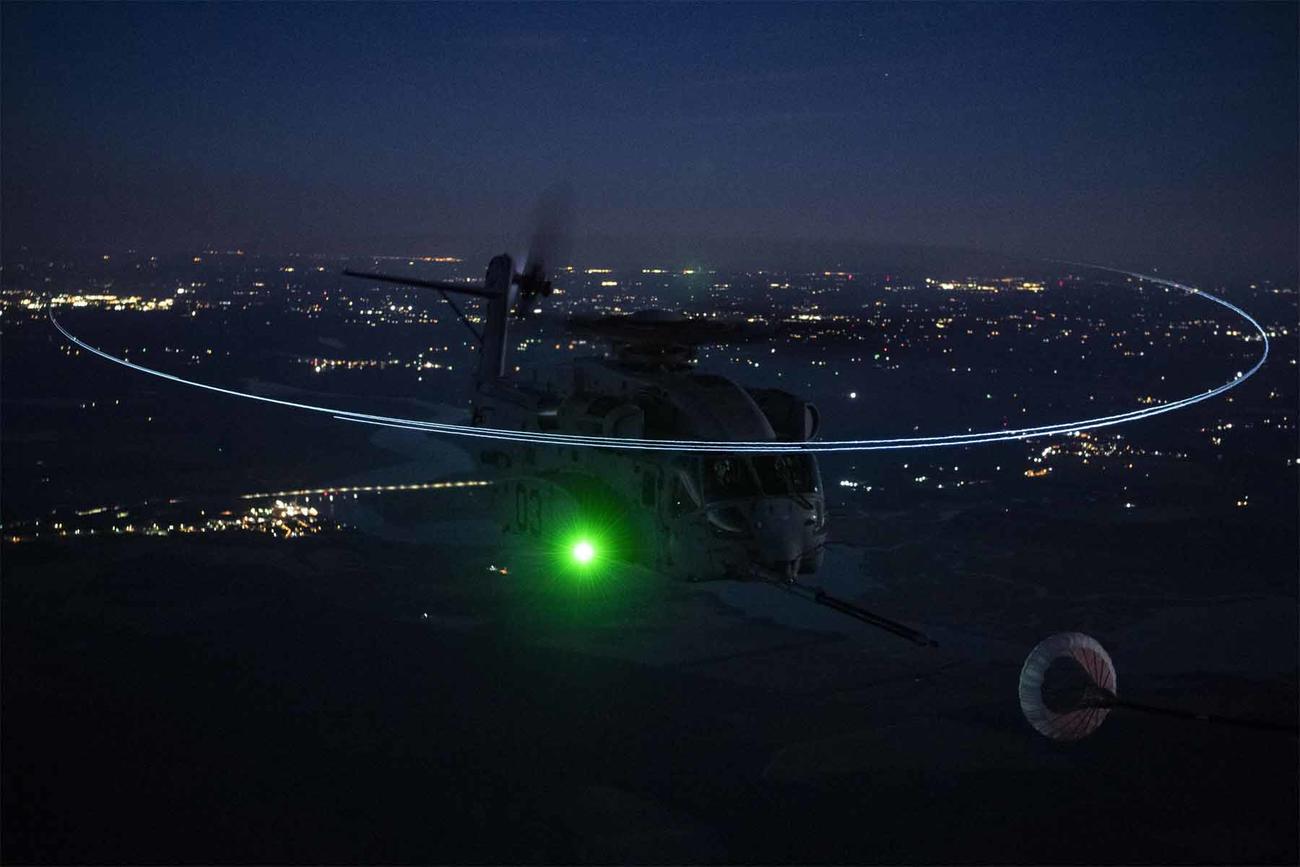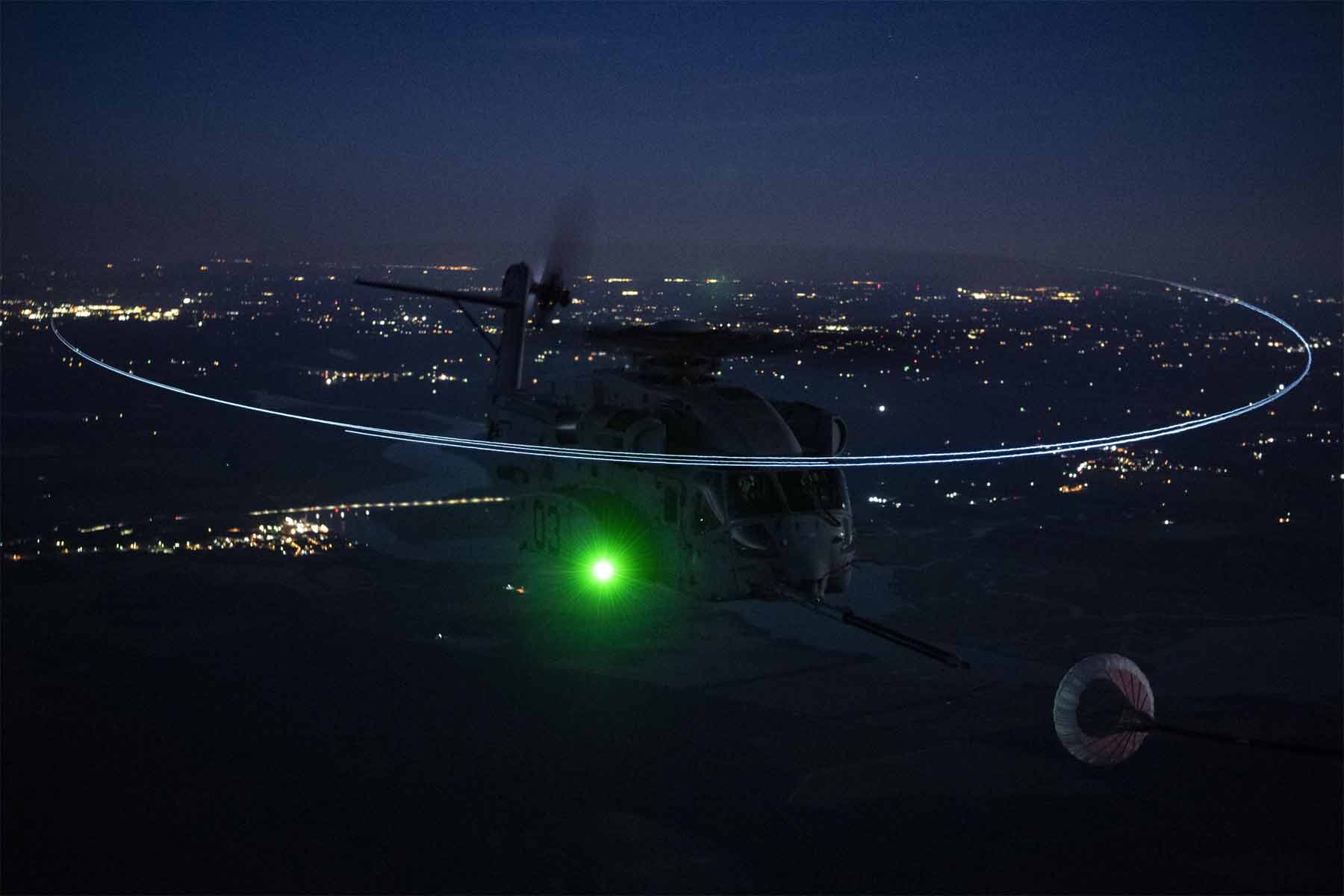

Teams from Marine Corps Air Station New River, North Carolina, have begun preparing for suitability and evaluation tests on the service’s newest CH-53K King Stallion heavy-lift helicopter, paving the way for the service to declare the aircraft operationally ready later this year.
The service is set to begin its official initial operational test and evaluation, or IOT&E, phase next month, the U.S. Navy said on Friday. The King Stallion is set to replace aging CH-53E Super Stallion helicopters; it will be able to lift twice as much as its predecessor and feature a wider cargo hold, while maintaining the same external footprint.
“I believe the service will be ready to declare [initial operational capability] sometime early this fall,” Marine Col. Jack Perrin, the heavy-lift helicopter program manager, said on Monday during a roundtable.
The Corps last week awarded a $878.7 million contract to Lockheed Martin-Sikorsky to build nine King Stallions as part of its next batch order, Lot 5, to be delivered in 2024. The contract award includes an option for the next production collection of nine aircraft, Lot 6, at a lower cost per unit.
Perrin called awarding the next contract “a big step” for the service as it brings the total inventory to 33 aircraft either delivered or procured, with greater volume reducing program costs.
From provided estimates, each aircraft in Lot 5 would cost $97.6 million; Lot 6 aircraft are expected to cost $94.7 million each, for a Lot 6 total contract cost of $852.5 million, according to the Navy. The Lot 6 contract is expected to be awarded in fiscal 2022, the Navy said.
The Marine Corps plans to buy 200 King Stallions, but the program has seen a series of setbacks due to mechanical and design problems that pushed back the expected IOC date from 2019 to 2021.
A Government Accountability Office report released earlier this year found that, while the Lockheed Martin-Sikorsky CH-53K program has made progress, there is a “moderate risk” that the new aircraft will not meet the required levels of reliability and payload-carrying capability by the end of operational testing.
Technical issues, ranging from engine shutdown from exhaust gas reingestion to a flawed power distribution unit design, resulted in a seven-year delay to the full-rate production decision from December 2015 to November 2022, GAO said. The service launched the program in 2005 to replace the older CH-53E Super Stallion helicopter with a more powerful ship-to-shore aircraft to transport heavy weapons, equipment and supplies.
GAO recommended the Marine Corps reduce the number of helicopters it buys until IOT&E is complete.
“I believe that it was a good suggestion,” Perrin said of GAO’s recommendation, “but I believe the overarching risk within the program had dictated that we maintain our ramp and continue to build up for the transition to drive the costs out.”
The costs of the new contracts do not include do not include engines and other equipment. Perrin said the Marine Corps has separately purchased the General Electric-T408 engines through Lot 5 — at a cost of $4.6 million per unit — and are in the process of purchasing the engines for the next three contract orders. The aircraft is powered by three engines.
“I’m expecting when the [fiscal] 2023 budget comes out that we’ll also see an increase in the total number of aircraft bought per year,” Perrin added.
Lawmakers are already looking to buy the Marine Corps additional aircraft.
In the House Appropriations Defense Subcommittee draft bill of the fiscal 2022 budget released Tuesday ahead of the markup, lawmakers are poised to fund 11 CH-53K helicopters, two more than the service’s request, according to Aviation Week.
Since October 2020, Sikorsky has delivered three operational CH-53Ks, which are now stationed in Jacksonville, North Carolina.
— Gina Harkins, Matthew Cox and Hope Hodge Seck contributed to this report.
— Oriana Pawlyk can be reached at [email protected]. Follow her on Twitter at @Oriana0214.
Related: The Marines’ New CH-53K King Stallion Has Now Been to Sea. Here’s What’s Next
© Copyright 2021 Military.com. All rights reserved. This material may not be published, broadcast, rewritten or redistributed.
